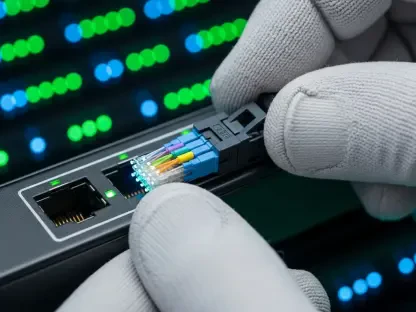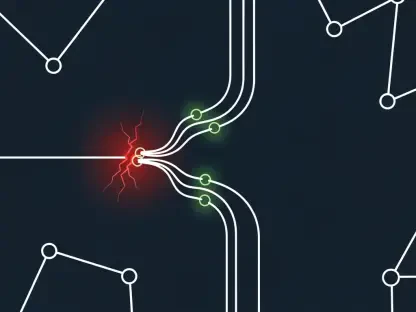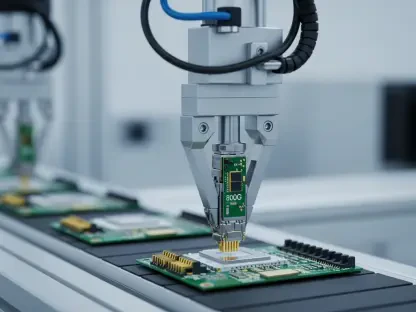Across the sprawling landscapes of Africa, where mines delve deep into the earth, ports hum with the rhythm of global trade, and energy infrastructure stretches over vast distances, a silent crisis often looms—unreliable connectivity. In these high-stakes environments, a momentary lapse in communication can spiral into massive financial losses or even jeopardize lives. Sedna Africa, a Johannesburg-based systems integrator, has stepped into this critical gap with a bold mission to fortify the digital backbone of the continent’s industrial sectors. With a recent investment of $287,000 in a state-of-the-art Network Operations Centre (NOC), the company aims to ensure that Africa’s heavy industries remain operational and secure. This facility, equipped with cutting-edge technology, represents a potential turning point for industries long plagued by connectivity woes. But the question remains: can such an investment truly address the monumental challenges faced by these sectors and keep them seamlessly linked in an increasingly digital world?
Bridging the Digital Divide in Heavy Industry
In a world often captivated by consumer tech innovations, Sedna Africa has carved a niche by focusing on the less glamorous but equally vital realm of industrial connectivity. Established in 2006 by visionaries Peter Dormehl and Darryl Mitchell, the company has evolved from a modest startup into a significant player operating across five African nations, including Senegal and Mozambique. Their core strength lies in deploying private mobile networks (MPNs), custom-built for industries like mining and ports where standard public networks often fail to meet stringent demands. A striking example of their impact unfolded in a mining operation, where Sedna replaced an inefficient setup of 50 Wi-Fi radios with just three MPN units. This shift not only slashed operational costs but also dramatically improved reliability, demonstrating how targeted technological interventions can yield outsized benefits in environments where every second of downtime counts.
Beyond individual projects, Sedna Africa’s broader mission tackles a pervasive issue: the digital divide that hampers industrial efficiency across the continent. While consumer-facing digitalization garners headlines with flashy apps and gadgets, the backbone of Africa’s economy—its heavy industries—often struggles with outdated or inadequate communication systems. Sedna’s approach prioritizes mission-critical reliability over widespread coverage, ensuring that data flows uninterrupted in settings where safety and productivity are paramount. Their work in multiple countries highlights a growing recognition that industrial sectors need tailored solutions rather than one-size-fits-all networks. By addressing these unique connectivity challenges, Sedna is laying the groundwork for a more resilient industrial landscape, one that can withstand the pressures of modern demands and compete on a global scale.
Transforming Operations Across Diverse Sectors
Sedna Africa’s influence extends well beyond mining, reaching into other pivotal sectors such as ports and energy, each with its own set of connectivity hurdles. At the Port of Beira in Mozambique, the company is pioneering a maritime private network, replacing antiquated narrowband systems with advanced LTE technology. This upgrade facilitates real-time logistics tracking, enhances asset management, and introduces paperless workflows, fundamentally modernizing port operations. The result is a dramatic increase in efficiency, reducing delays and errors that once plagued manual processes. Such transformations underscore how reliable connectivity can act as a catalyst, turning logistical bottlenecks into streamlined operations that bolster trade and economic growth across the region.
In the energy sector, Sedna’s innovations offer equally compelling solutions to persistent challenges. Their distributed fiber sensing technology repurposes standard fiber-optic cables into sophisticated security tools, capable of detecting pipeline vandalism or leaks within seconds. This rapid response capability prevents minor incidents from escalating into catastrophic failures, safeguarding both infrastructure and the environment. By integrating such advanced systems, Sedna ensures that energy providers can maintain operational integrity over vast, often remote, networks. These efforts across ports and energy sectors reveal a common thread: connectivity isn’t merely a convenience but a critical safeguard that protects assets, optimizes workflows, and fortifies industries against the unpredictable nature of their operating environments.
Harnessing Technology Through a Central Hub
Central to Sedna Africa’s strategy is their newly established $287,000 Network Operations Centre in Johannesburg, often referred to as the “nerve center” of their operations. This facility consolidates data from an array of sources—IoT devices, mobile networks, and security cameras—into a single, cohesive command interface. Utilizing military-grade technology, trusted even by the US Department of Defense, the NOC empowers operators with real-time insights across diverse industrial settings. Artificial intelligence enhances this capability by monitoring expansive areas through CCTV feeds, flagging anomalies such as unauthorized access during off-hours. This proactive approach to surveillance and decision-making marks a significant leap forward, ensuring that potential issues are addressed before they disrupt operations.
Moreover, the NOC’s integration of fiber sensing technology extends its protective reach over remote infrastructure, identifying threats with pinpoint accuracy across vast distances. This isn’t just about oversight; it’s about enabling faster, smarter responses in high-pressure scenarios where delays can be costly. The center’s ability to merge operational metrics with security data into one actionable platform redefines how industrial environments are managed. By centralizing control and leveraging cutting-edge tools, Sedna positions itself at the forefront of digital oversight, offering a model for how technology can mitigate risks and enhance efficiency in Africa’s most demanding industrial arenas.
Expanding Reach and Fostering Collaboration
Sedna Africa’s ambitions are not limited to their current footprint; the company is actively planning to extend its reach into Nigeria’s industrial hubs, marking a significant step in their expansion strategy. Already operating in several nations like Zimbabwe and Zambia, their growth is driven by a dual focus on scaling operations and building local capacity. Rather than pursuing a purely competitive stance, Sedna emphasizes collaboration, sharing expertise to nurture talent and strengthen Africa’s position in the global industrial connectivity market, valued at nearly $15 billion. This cooperative ethos, as articulated by Managing Director Anton Fester, reflects a belief that success in this space benefits all stakeholders, creating a rising tide that lifts entire communities and industries.
This collaborative approach also aligns with a broader goal of sustainable development across the continent. By investing in knowledge transfer and local partnerships, Sedna aims to empower African nations to manage and innovate within their own industrial ecosystems. Such initiatives are crucial in a region where technological adoption often lags due to resource constraints or skill gaps. Their expansion plans are thus not merely about market penetration but about fostering a network of shared progress. As Sedna continues to grow, their commitment to building bridges—both digital and communal—could serve as a blueprint for how technology companies can drive meaningful, inclusive impact in emerging markets.
Reflecting on a Quiet Digital Revolution
Looking back, Sedna Africa’s journey reveals a profound shift in how industrial connectivity is perceived and prioritized across the continent. Their tailored private mobile networks have redefined efficiency in mining, ports, and energy sectors, delivering not just cost savings but also enhanced safety through reliable communication. The $287,000 investment in the Johannesburg NOC stands as a testament to their dedication, integrating AI and military-grade technology to elevate operational oversight to new heights. Successful projects across multiple countries showcase their ability to adapt and innovate in diverse settings.
Moving forward, the focus should pivot to sustaining this momentum through strategic partnerships and continued investment in local talent. Expanding into new markets like Nigeria offers a chance to replicate past successes while addressing unique regional challenges. Policymakers and industry leaders must also play a role by creating an enabling environment for such innovations to thrive, ensuring that Africa’s industrial future remains bright and connected. Sedna’s efforts highlight a path toward resilience, suggesting that the quiet digital revolution in heavy industries could yield lasting economic impact if nurtured with vision and collaboration.









